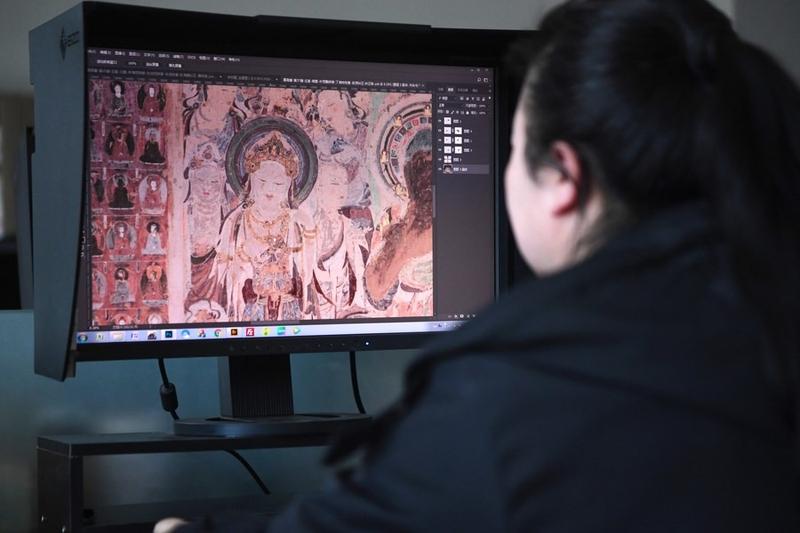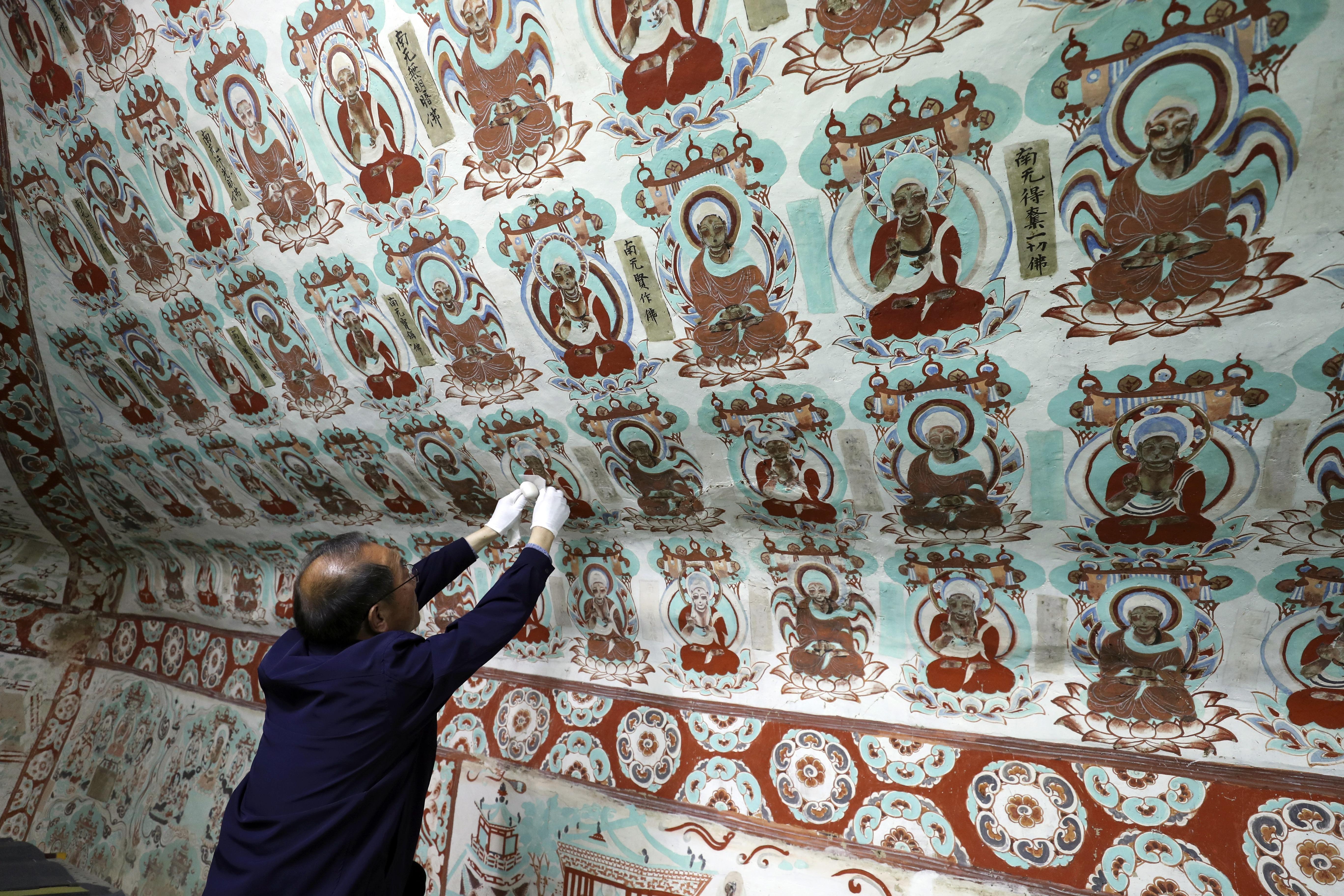 Nian Haili, a technician from the Dunhuang Academy's digital preservation team, processes images of a mural in Dunhuang, northwest China's Gansu province, April 25, 2023. (PHOTO / XINHUA)
Nian Haili, a technician from the Dunhuang Academy's digital preservation team, processes images of a mural in Dunhuang, northwest China's Gansu province, April 25, 2023. (PHOTO / XINHUA)
LANZHOU/CHENGDU - Pointing at a replica of a mural painting of Mogao Grottoes at Dunhuang Art Gallery in Lanzhou, the capital of northwest China's Gansu province, a docent gives a detail that wowed the visitors.
"The original painting, featuring a panorama of Mount Wutai, is 13.5 meters long and five meters high. To digitalize the mural, experts took over 4,000 photos and conquered various technical difficulties to present the replica," he said.
Digitalization has become a vital means in the preservation of the millennium-old Mogao Grottoes, a UNESCO World Heritage site in Dunhuang boasting rich collections of Buddhist artworks -- more than 2,000 colored sculptures and 45,000 square meters of murals -- in 735 caves along a cliff.
By the end of 2022, the Dunhuang Academy had finished compiling digital data collection on 278 caves, image processing for 164, and the 3D reconstruction of 145 painted sculptures and seven ruins while delivering a panoramic tour program for 162 caves
The idea of digitalizing Dunhuang culture was first put forward in the late 1980s. It is aimed at better recording and preserving cultural relics which are under threats of natural erosion and human-induced damage while making them more widely available for visitors without the need to open and access the actual caves.
ALSO READ: A deeper dive into Dunhuang
By the end of 2022, the Dunhuang Academy had finished compiling digital data collection on 278 caves, image processing for 164, and the 3D reconstruction of 145 painted sculptures and seven ruins while delivering a panoramic tour program for 162 caves.
"In addition to the Mogao Grottoes, our researchers also partake in the digitalization of the grottoes in other provincial-level regions, including Qinghai, Shaanxi, and Inner Mongolia, as the protection of murals is a race against time," said Zhao Shengliang, Party chief of the academy.
Digitalization of the ancient grottoes is only a fraction of how China has, over the past decades, invested heavily in the sustainable protection of cultural heritages.
Saturday marks this year's Cultural and Natural Heritage Day in China, with the theme focusing on cultural relics protection and utilization, as well as cultural confidence and strength.
ALSO READ: Heritage Museum showcases Dunhuang art
Over 9,800 events, including more than 6,300 offline events, were held nationwide to showcase China's achievements in cultural and heritage protection.
In the past decade, China's interdisciplinary cooperation in archaeology has deepened, and the technical solutions to protect ancient murals and lacquerware are among the best in the world.
 On May 16, 2023, Fan Zaixuan, 62, a restorer at Dunhuang Academy, works on a damaged mural at the Mogao Caves in Dunhuang, Gansu province. (ZOU HONG / CHINA DAILY)
On May 16, 2023, Fan Zaixuan, 62, a restorer at Dunhuang Academy, works on a damaged mural at the Mogao Caves in Dunhuang, Gansu province. (ZOU HONG / CHINA DAILY)
As discoveries keep springing up at the excavation site of the Sanxingdui Ruins, one of the world's greatest archaeological findings of the 20th century, a growing band of researchers, consisting of experts in archaeology, cultural relics protection, physical anthropology, zoology, metallurgy, geology, chemistry, and materials science, among others, have also gained wide attention.
Unlike other excavations, the digging site of the Sanxingdui Ruins is like working in a high-tech lab.
The whole excavation site is protected by a large steel structure house, in which the newly discovered relics are covered by "glass cabins" where researchers work in protective suits.
"The temperature and humidity in the cabins are monitored and controlled in real-time, thus reducing the impact brought by human activities to preserve the site," said Tang Fei, head of the excavation team at the ruins.
ALSO READ: A glimpse into history
Discovered in the late 1920s, the Sanxingdui Ruins, covering an area of 12 square km, are believed to be the remnants of the Shu Kingdom, dating back some 4,500 to 3,000 years.
Just beside the site, an array of machines specializing in scanning and analyzing the relics are all set so that artifacts unearthed from the pits are protected in the first place.
According to Tang, to best preserve the ancient treasures, the excavation team of the ruins comprises researchers from 33 research units, and the excavation plan is jointly drafted by experts from more than 10 scientific research institutions, including the Institute of Archaeology under the Chinese Academy of Social Sciences, Peking University, and Sichuan University.


